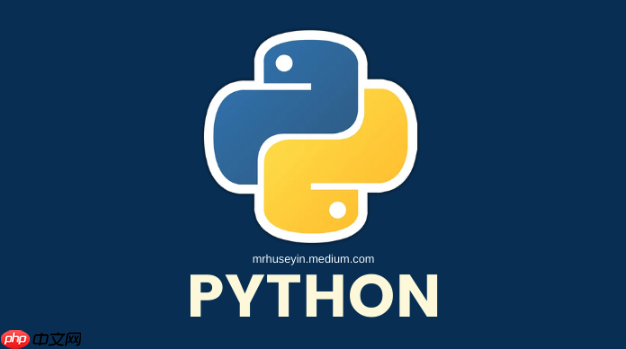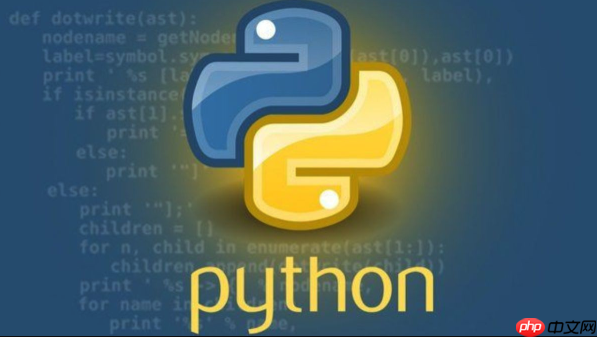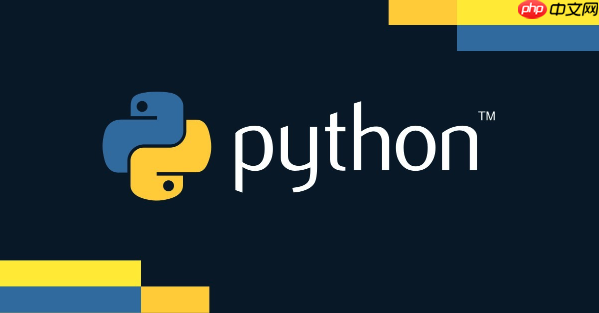python time模块通过封装c标准库函数与操作系统时间机制交互,核心函数如time()调用gettimeofday()或getsystemtimeasfiletime()获取墙上时间;2. sleep()依赖nanosleep()或sleep()实现程序暂停,但实际精度受系统调度器限制;3. gmtime()、localtime()和mktime()基于c的tm结构处理时区和夏令时,返回struct_time对象便于操作,跨平台且高效。这保证了time模块既能准确反映系统时间又能满足基本计时需求,同时避免重复造轮子。

Python的
time

要理解Python
time
Modules/timemodule.c
time
比如,
time.time()
gettimeofday()
GetSystemTimeAsFileTime()
立即学习“Python免费学习笔记(深入)”;

再看
time.sleep(seconds)
sleep
nanosleep()
Sleep()
至于
time.gmtime()
time.localtime()
time.mktime()
gmtime_r()
localtime_r()
mktime()
time.struct_time

所以,核心思想就是:Python通过C语言接口,把操作系统提供的底层时间服务“暴露”给上层应用。这既保证了效率,又避免了重复造轮子,同时还兼顾了跨平台兼容性,因为C标准库本身就是跨平台的。
time
这问题问得挺好,因为它直接触及了核心。我个人觉得,理解
time
time.time()
time.time()
gettimeofday()
clock_gettime()
CLOCK_REALTIME
CLOCK_MONOTONIC
time.monotonic()
CLOCK_MONOTONIC
在Windows系统上,情况略有不同,但理念相似。
time.time()
GetSystemTimeAsFileTime()
FILETIME
这种交互模式意味着,
time
time.time()
time.monotonic()
import time
start_wall = time.time()
start_mono = time.monotonic()
# 模拟一些工作
time.sleep(0.1)
end_wall = time.time()
end_mono = time.monotonic()
print(f"time.time() 经过了: {end_wall - start_wall:.6f} 秒")
print(f"time.monotonic() 经过了: {end_mono - start_mono:.6f} 秒")
# 如果在运行期间系统时间被调整,time.time()的差值可能会不准,但monotonic不会。time.sleep()
time.sleep()
sleep
其核心原理是,当一个进程调用
sleep
nanosleep()
在Windows上,
Sleep()
sleep(0.001)
time.sleep()
回想起来,我曾经在开发一个定时任务调度器时,就因为过度依赖
time.sleep()
sleep(1)
APScheduler
sleep
import time
start_time = time.monotonic()
sleep_duration = 0.05 # 50毫秒
time.sleep(sleep_duration)
actual_duration = time.monotonic() - start_time
print(f"请求休眠: {sleep_duration:.6f} 秒")
print(f"实际休眠: {actual_duration:.6f} 秒")
print(f"误差: {actual_duration - sleep_duration:.6f} 秒")
# 你会发现实际休眠时间往往大于或等于请求时间,且存在一定的误差。time
time
time.struct_time
struct tm
time.gmtime()
time.localtime()
time.time()
struct_time
gmtime()
localtime()
gmtime_r()
localtime_r()
/etc/localtime
TZ
time.mktime()
struct_time
localtime()
mktime()
struct_time
mktime()
我个人觉得,
struct_time
time
datetime
tzinfo
datetime
time
datetime
import time
# 获取当前本地时间结构体
local_struct_time = time.localtime()
print(f"本地时间结构体: {local_struct_time}")
# 获取当前UTC时间结构体
gm_struct_time = time.gmtime()
print(f"UTC时间结构体: {gm_struct_time}")
# 将本地时间结构体转换回时间戳
timestamp_from_local = time.mktime(local_struct_time)
print(f"从本地时间结构体转换回的时间戳: {timestamp_from_local}")
# 将UTC时间结构体转换回时间戳 (mktime假设是本地时间,所以这里会有偏差)
# 如果想正确转换UTC struct_time,需要用calendar.timegm
# import calendar
# timestamp_from_gm = calendar.timegm(gm_struct_time)
# print(f"从UTC时间结构体转换回的时间戳 (calendar.timegm): {timestamp_from_gm}")
# 演示struct_time的字段访问
print(f"年份: {local_struct_time.tm_year}, 月份: {local_struct_time.tm_mon}, 日期: {local_struct_time.tm_mday}")以上就是Python源码中如何实现时间模块 深入time模块函数运行原理的详细内容,更多请关注php中文网其它相关文章!

每个人都需要一台速度更快、更稳定的 PC。随着时间的推移,垃圾文件、旧注册表数据和不必要的后台进程会占用资源并降低性能。幸运的是,许多工具可以让 Windows 保持平稳运行。

Copyright 2014-2025 https://www.php.cn/ All Rights Reserved | php.cn | 湘ICP备2023035733号